Table of Contents
🔎 30-Second Summary
Critical minerals are the backbone of clean energy, electronics, and defense technologies—but many are sourced from geopolitically sensitive regions. This article explains what makes a mineral “critical,” how global powers define their own lists, and why minerals like lithium, cobalt, and rare earths are central to the energy transition.
You’ll explore the supply risks, recycling challenges, and strategic responses shaping the mineral economy. With easy-to-follow visuals and global context, this piece helps readers, from students to policymakers, grasp the high-stakes race for materials that power the modern world..
Critical minerals play a significant role in shaping our global future. These essential resources are set to experience a massive demand surge—expected to reach nearly 35 million tons annually. As countries implement their climate pledges, global demand for these minerals will need to double by 2030 and triple by 2040.
Modern technology needs more minerals than ever before. A wind farm requires nine times more minerals than a natural gas power plant. Similarly, an electric car uses six times more minerals than a conventional gasoline vehicle.
The United States has identified 50 critical minerals vital for national security. India, too, has recognized the strategic importance of these resources and released a list of 30 critical minerals, including lithium, cobalt, and nickel.
The Geological Survey of India has significantly ramped up exploration—from 59 projects in 2020–21 to 122 projects in 2022–23.
This comprehensive guide explores what critical minerals are, why they are essential for future technologies, and how countries—particularly India—are positioning themselves in this strategic domain.
The insights presented are valuable for a wide range of readers, including professionals in energy, policy, mining, and materials science, as well as students and competitive exam aspirants.
What Are Critical Minerals and Why Do They Matter
Critical minerals are natural resources that power our technological society. Their importance is growing rapidly as global industries transition toward cleaner energy, advanced manufacturing, and digital technologies.
A mineral is considered “critical” based on two key factors:
- Economic Importance – It plays a vital role in key industries such as energy, electronics, and defense.
- Supply Risk – Its supply chain is vulnerable due to geopolitical control, lack of alternatives, or long development timelines.
These minerals are irreplaceable building blocks of modern technology.
Wind turbines can’t function without rare earth elements in their permanent magnets. Power grids require huge amounts of copper and aluminum.
Modern batteries rely heavily on lithium, graphite, cobalt, and manganese—materials identified as essential for clean energy technologies by industry briefings.
According to the International Energy Agency (IEA), the production of many critical minerals is more geographically concentrated than oil and gas, increasing the risk of disruption.
On average, it takes over 16 years to go from discovery to production. Environmental and social challenges make things even more complex.
The IEA projects that the energy sector alone might require six times more minerals in the next 20 years. Demand for copper, in particular, could soon surpass all the copper ever mined in human history.
These minerals are also vital to defense systems.
A Virginia-class nuclear submarine uses around 9,200 pounds of rare earth materials, while an F-35 fighter jet needs over 900 pounds of these elements.
Modern technologies use not just more minerals but a greater variety.
For instance, wind farms and electric vehicles rely on up to seven different minerals, while their conventional counterparts use only two.
For a detailed look at India’s official list of 30 critical minerals, their uses, and policy roadmap, check out our in-depth guide on Critical Minerals in India.
Top 10 Critical Minerals Globally (with Uses)
While there’s no official “global top 10” list, reports by the IEA, USGS, and the EU consistently highlight these as the most strategically important:
| Mineral | Key Applications |
|---|---|
| Lithium | EV batteries, grid storage |
| Cobalt | Rechargeable batteries, aerospace |
| Nickel | Battery cathodes, stainless steel |
| Rare Earth Elements | Permanent magnets, defense tech |
| Graphite | Battery anodes, lubricants |
| Copper | Electrical wiring, power grids |
| Gallium | Semiconductors, solar panels |
| Germanium | Infrared optics, fiber optics |
| Tin | Electronic solder, circuit boards |
| Platinum Group Elements (PGEs) | Fuel cells, catalytic converters |
These minerals are critical for powering next-gen technologies and mitigating energy transition risks.
The Global Critical Minerals Landscape in 2025
The global market for critical minerals is projected to more than double in value, from INR 27,423.65 billion in 2023 to INR 64,972.95 billion by 2040, according to Kings Research.
Clean energy technology deployment is accelerating this growth through 2024 and 2025, as noted by the IEA and UNCTAD.
As highlighted by KPMG India, three countries—Australia, the Democratic Republic of Congo, and China—control over 75% of global output for lithium, cobalt, and rare earth elements.
China’s influence is even greater in processing:
- Refines 35% of nickel
- Refines 70–80% of lithium and cobalt
- Refines 90% of rare earth elements
The IEA notes significant price volatility in this sector.
- Lithium prices dropped more than 80% since 2023, after an earlier eightfold increase
- Prices for nickel, cobalt, and graphite also fell by half despite rising demand
Geopolitical concerns are compounding risks. China has restricted exports of gallium, germanium, graphite, tungsten, and tellurium.
In response, the EU is building supply chain partnerships in Africa through its €300 billion Global Gateway investment program, as noted by Energy Capital Power.
Global mining investment rose 10% in 2023, and the sector needs an estimated INR 67,504.36 billion by 2040 to meet demand.
Meanwhile, Chinese companies invested INR 843.80 billion in overseas mineral assets, as highlighted by the IEA.
Recycling may reduce new mining needs by 25–40% by mid-century.
However, vulnerability analysis shows that without major suppliers, remaining sources may only meet 25–30% of global demand for cobalt and graphite by 2035.
The electric vehicles (EV) segment currently leads the market with over 30% share.
With EV sales expected to jump from 18% today to 65% by 2030, demand for critical minerals will skyrocket, as projected by Kings Research.
Critical Minerals of India: Status and Strategy
India’s clean energy, defense, and manufacturing ambitions rely on minerals it doesn’t produce at scale. To reduce import dependency and secure future supply chains, India officially released a list of 30 critical minerals in June 2023 through the Ministry of Mines and Indian Bureau of Mines (IBM).
This list was finalized through a three-stage evaluation process:
- Stage 1: Shortlisting based on relevance to national priorities like EVs, semiconductors, and defense
- Stage 2: Screening based on geological availability and risk assessment
- Stage 3: Consultation with ministries and domain experts
The final list includes strategic minerals like lithium, cobalt, nickel, REEs, gallium, germanium, phosphorous, fluorspar, potash, and others essential for clean energy, defense, agriculture, and electronics.
India’s approach is aligned with global frameworks:
- The U.S. designates 50+ minerals
- The EU has 34 critical raw materials
- Japan and South Korea have focused lists emphasizing energy and tech needs
Domestic Status Snapshot
- High import dependency: India is 100% dependent on imports for more than 10 of the 30 critical minerals.
- Top suppliers: China supplies 82% of lithium, 85.6% of bismuth, and a dominant share of REEs to India (The Hindu, 2023).
- Low processing capacity: India currently lacks industrial-scale refining for battery-grade lithium, gallium, germanium, and many REEs.
Key Policy Developments
- National Critical Mineral Mission (NCMM) launched with ₹16,300 crore initial allocation
- Additional ₹18,000 crore expected from PSUs and private sector
- Customs duty exemptions on critical minerals to boost domestic processing
- Exploration drive: GSI has completed 422 mineral exploration projects and has 227 new ones planned
- First critical mineral auction held across 8 states
India is also building its international footprint:
- KABIL has acquired 15,703 hectares in Argentina’s Catamarca province for lithium
- Strategic talks underway for minerals from Zimbabwe (lithium), Tanzania (graphite, niobium), and Australia (joint REE projects)
Challenges Ahead
- No domestic refining: Even with upstream stakes, India lacks battery-grade conversion/refining facilities
- China’s dominance in REE and lithium supply chains is a key vulnerability
- Environmental clearance delays, high ESG scrutiny, and tech gaps affect scalability
Key Critical Minerals: Strategic Comparison (Top 5)
This table highlights select minerals from India’s official list that have significant industrial and strategic relevance.
| Mineral | Key Applications | Availability in India | Strategic Importance |
| Lithium | EV batteries, Ceramics, Lubricants | 5.9 million tonnes in J&K (inferred) | Critical for energy transition |
| Rare Earth Elements | Permanent magnets, Electronics | 11.93 Mt from beach sand | Defense and clean energy |
| Cobalt | Batteries, Aerospace alloys | Not available (imported) | EV manufacturing |
| Graphite | Batteries, Lubricants | 9 million tonnes reserves | Energy storage |
| Vanadium | Steel alloys, Nuclear components | 24.63 million tonnes | Military applications |
Difference Between Critical Minerals and Rare Earth Elements (REEs)
| Feature | Critical Minerals | Rare Earth Elements (REEs) |
| Definition | Minerals critical to economy & security | Subset of 17 lanthanide elements |
| Scope | Broader (includes REEs + others like lithium) | Narrower (just 17 elements) |
| Example Elements | Lithium, cobalt, nickel, graphite | Neodymium, dysprosium, terbium |
| Applications | EVs, batteries, defense, electronics | Magnets, optics, lasers, electronics |
| Supply Challenges | High dependency on few countries | Dominated by China (90% refining) |
Future Outlook: What Lies Ahead
As demand for critical minerals triples by 2040, countries are shifting from passive importers to active supply chain players. The future of this sector will be shaped by:
- Direct Lithium Extraction (DLE): Faster, less water-intensive, and being piloted in South America and the US.
- Urban Mining: Companies like Attero and Redwood Materials are recovering lithium, cobalt, and rare earths from e-waste.
- Recycling & Circular Economy: By 2040, up to 40% of mineral demand may be met via recycling.
- Substitute Technologies: Sodium-ion and solid-state batteries may reduce dependency on cobalt and lithium in the long term.
Governments are also forming alliances and stockpiling strategic reserves. The winners of this resource race will be those who secure access, build refining capacity, and invest in innovation.
Critical minerals are no longer just industrial inputs—they are strategic levers shaping the future of energy, defense, and digital innovation. As global demand skyrockets and geopolitical control tightens, the ability to secure, refine, and recycle these minerals will define national competitiveness.
Whether it’s building resilient EV supply chains, enabling green infrastructure, or reducing dependence on imports, critical minerals are foundational to the 21st-century economy. Governments, businesses, and citizens must all recognize their significance—not just for economic growth, but for long-term sustainability and sovereignty.
Practice Questions for UPSC and Competitive Exams
Q1. What are the two primary factors that determine the criticality of a mineral?
A. Economic importance and environmental sustainability
B. Supply risk and export revenue
C. Economic importance and supply risk
D. Cost of extraction and energy efficiency
Answer: C
Q2. Which of the following countries does NOT dominate the supply of critical minerals globally?
A. Australia
B. Democratic Republic of Congo
C. India
D. China
Answer: C
Q3. What initiative has the Indian government launched to secure its supply of critical minerals?
A. Atmanirbhar Bharat
B. National Mineral Exploration Policy
C. National Critical Mineral Mission
D. Indian Strategic Minerals Program
Answer: C
Q4. Match the mineral with its major application?
A. Lithium → A. Steel manufacturing
B. Vanadium → B. Battery technology
C. Rare Earths → C. Permanent magnets and electronics
Correct Match: Lithium → B, Vanadium → A, Rare Earths → C
Q5. Which international alliance has India joined to strengthen its global mineral supply chains?
A. IEA
B. OPEC+
C. Minerals Security Partnership (MSP)
D. BRICS
Answer: C

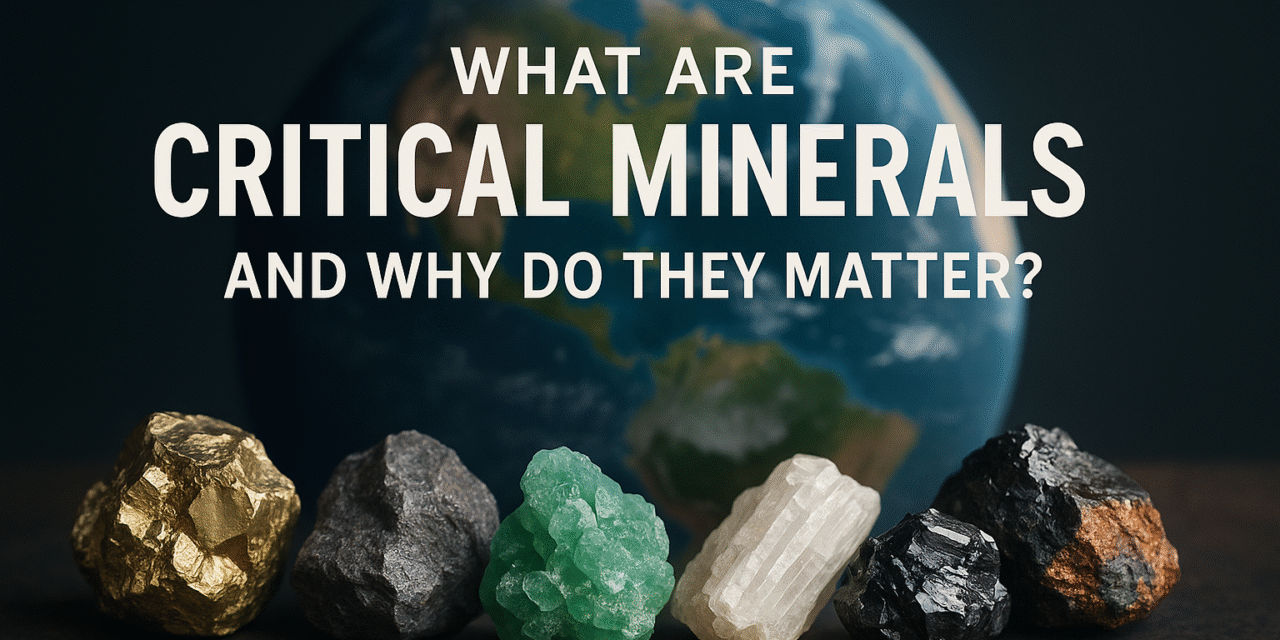
![The Surprising Truth About Beryllium Applications in Modern Technology [2025 Guide]](https://ik.imagekit.io/lxsotwajc/wpmedia/wp-content/uploads/2025/06/featured-Image3-440x264.webp)
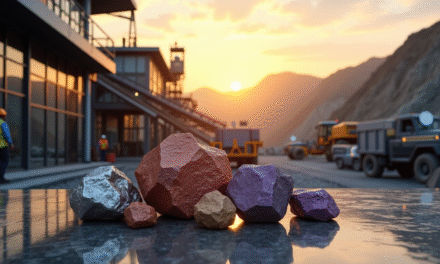
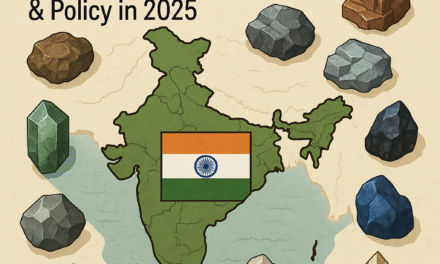
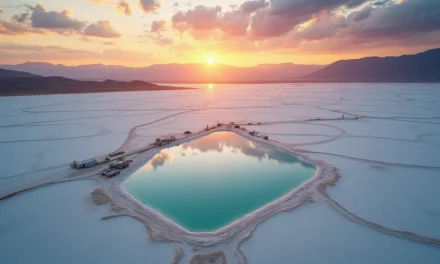


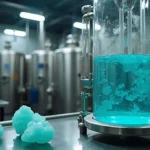

Trackbacks/Pingbacks